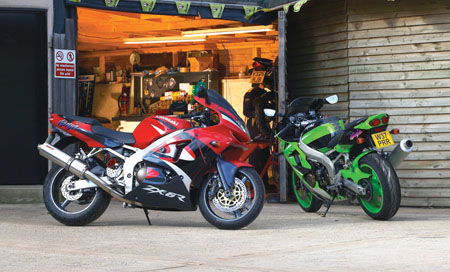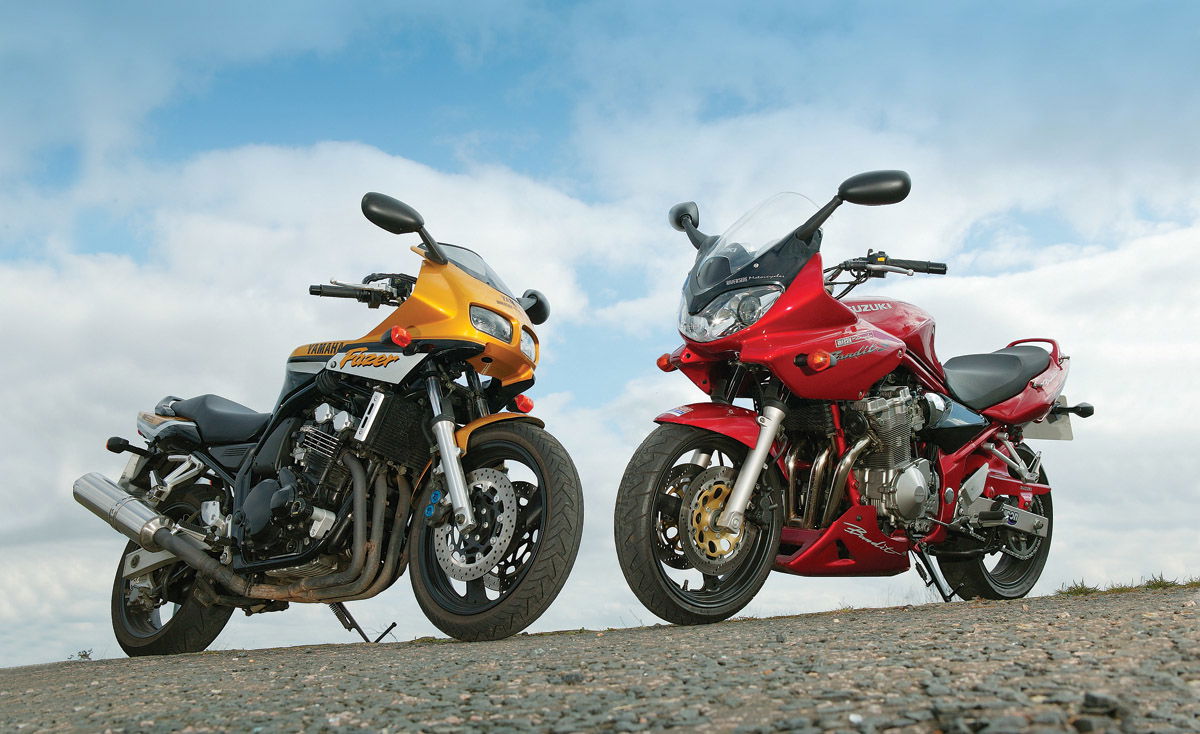Used Review: Kawasaki ZX-6R 1997 - 2001
The ZX-6R exploded onto the scene in 1995 and has been with us ever since. Bertie Simmonds explores the myriad of myths and litany of lies about the G and J models of the big K's popular middleweight blaster.

 |
Honda had been having its own way for too long. A succession of CBR600s had held the top spot in the sales charts and held sway in the hearts of the bike-buying public for the best part of ten years. Someone had to do something about it.
Kawasaki finally delivered the goods with the new ZX-6R. Their own ZZ-R600 had been the fastest 600 for years, but soft suspension and wobbly handling made it a sports-tourer and also-ran to most middleweight sports-bikers. Then Kawasaki hit on the rowdy 'n' raw formula and constructed the new ZX-6R for 1995.
Suddenly the sporty and practical CBR was blown into the weeds.The ZX-6RF1 had a stoating, all-new 599cc motor which, allied to Kawasaki's ram-air system gave the bike a rear-wheel 93bhp and an intake roar to die for.
Handling was similarly superb, thanks to good quality suspenders. Suddenly Honda had a fight on its hands and the changes to the 1995 CBR weren't enough to keep it in top spot. The 6R had won the hearts and minds of the racier middleweight massive.
We reckon it goes even further than that. It's because of the 6R of 1995 that we have today's racy middleweights. Fact.
Kawasaki maintained the pressure with the ZX-6RG of 1997 and '99's J, by which time Honda had released a Honda CBR600F with an ally beam frame and Yamaha had upped the ante with the racier-still R6. These made the ZX-6RG and J the sensible option with a wild streak running through 'em, perfect for most of us bikers, then...
CLOCKS
Clocks are analogue, although owners report that the small numbers make judging your speed difficult at night. Cool to have an 180mph speedo on a middleweight, though. LCD temp and fuel gauges on the G and J models, although both persist with a fuel tap, rather than just the reserve light. 50mpg is no problem if you're careful, 42 in regular cycles. Tank range to reserve is around 120-140 miles
ENGINE
Generally very strong. Some high-milers can sound a little rattly, but still produce good power. General characteristics of the motor are that bugger-all happens until 3000 revs, when things pick up gradually until 7000rpm, followed by a kick in the pants at 10,000 before the redline is hit at 14,000rpm. The limiter kicks in 500rpm after that. Popular mods: Dynojet kit, K&N filter. Service intervals are as per your typical Japanese bike - every 4000 miles
FORKS
These take a hammering from road crap, despite the fork guards. Watch out for dealers/sellers actually painting over the damage! Popular mods include a re-spring and re-valve for a more progressive feel and to stop them bottoming out under heavy braking
BRAKES
Front brakes need thorough cleaning in winter to maintain performance and avoid seized calipers. Many owners complain of disc warping (check for a mild throbbing at the lever during a test ride). Lots were replaced under warranty
TYRES
Bridgestone and Dunlop are the most popular choices. Dunlop's Sportsmaxes are good for owners of 6Rs that spend their time touring rather than racing, while the racier D207s (especially the RRs) are a favourite with trackday addicts, although the road compound ones are good enough for most. Bridgestone's 010s are also
popular, while the SS version is great for track days but
obviously doesn't last as long
WHEELS
Bearings can take a hammering so check for any play at both ends if you can. Wheel paint is thin on some bikes. Keep 'em clean and free of road grit and pasted on chain lube and you should be okay
FINISH
Some nuts and bolts can look scrappy without TLC, but paint and stickers are generally good quality. Cosmetic mods worth doing include a hugger, double-bubble screen, crash bungs and a fender extender to protect
vulnerable exhaust downpipes
CARB ICING
A real bug-bear on carbed Kwaks. The bike will stutter in cold weather and run as though it's got a fuel starvation problem. The carb heaters reduce the problem but don't eliminate it. Ensure the bike is thoroughly warmed before riding and that the filter in the system is regularly checked for blockages
HOW MUCH, MISTER?
ZX-6RG1-G2: (1998-1999)
Price new: £7250
Colours: green/purple, grey/black, red/black, red/grey
Big aesthetic re-vamp smooths off the looks and makes the bike physically bigger. Subtle changes make the 6R more of an all-rounder. Expect to pay anything from £2100 for well-used, high-mileage G1s and up to £3300 for a clean, low-mileage G2.
ZX-6RJ1-J2: (2000-2001)
Price new: £6495
Colours: green/black, silver/black, red/black
Major re-vamp and styling changes include twin-light fairing and updated engine. It's now the practical 600 with a wild side. Pay from £2600 for a hard-worked J1 with a few miles on the clock to £3750 for a clean and shiny J2.

Honda had been having its own way for too long. A succession of CBR600s had held the top spot in the sales charts and held sway in the hearts of the bike-buying public for the best part of ten years. Someone had to do something about it.
Kawasaki finally delivered the goods with the new ZX-6R. Their own ZZ-R600 had been the fastest 600 for years, but soft suspension and wobbly handling made it a sports-tourer and also-ran to most middleweight sports-bikers. Then Kawasaki hit on the rowdy 'n' raw formula and constructed the new ZX-6R for 1995.
Suddenly the sporty and practical CBR was blown into the weeds.
The ZX-6RF1 had a stoating, all-new 599cc motor which, allied to Kawasaki's ram-air system gave the bike a rear-wheel 93bhp and an intake roar to die for.
Handling was similarly superb, thanks to good quality suspenders. Suddenly Honda had a fight on its hands and the changes to the 1995 CBR weren't enough to keep it in top spot. The 6R had won the hearts and minds of the racier middleweight massive.
We reckon it goes even further than that. It's because of the 6R of 1995 that we have today's racy middleweights. Fact.
Kawasaki maintained the pressure with the ZX-6RG of 1997 and '99's J, by which time Honda had released a CBR600F with an ally beam frame and Yamaha had upped the ante with the racier-still R6. These made the ZX-6RG and J the sensible option with a wild streak running through 'em, perfect for most of us bikers, then...

